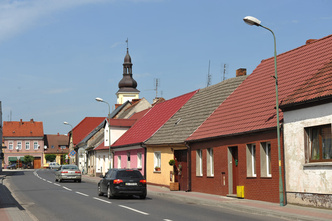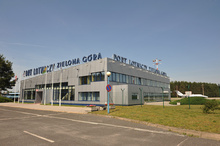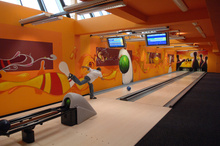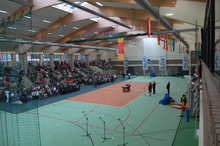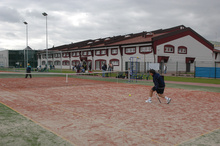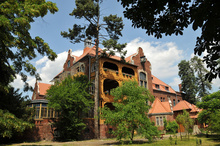Babimost Commune
Babimost Commune is a very strong centre of the ethnographic region known as Babimojszczyzna.
The local residents have preserved both the traditional customs and outfits of the Wielkopolska region and a strong sense of national identity. There are 3 local Halls of Remembrance in this commune. They document the hard struggle of Babimost residents to preserve the Polish character during partitions and World War II.
Since 1973 the Municipal Public Library has housed the Babimost Hall of Regional Relics. Originally, there were about 500 exhibits in the Hall. These included: traditional outfits, musical instruments (f.ex. the wedding black goat bagpipe), household tools and utensils, documents and photographs. In 1981 the collection was expanded to include an exhibition dedicated to Krzysztof Żegocki. In recent years further exhibits have been included, such as photographs of Babimost and the surrounding area from before World War I, charts presenting the borders of Babimost County in 1835 and 1922 as well as an exhibition of postcards presenting Babimost, the oldest ones dating from the end of the 19th century.
The other two halls of remembrance are: the Hall of History at the School in Nowe Kramsko and the Hall of Remembrance at the Educational Complex in Podmokle Małe. Educationally, one of the places of interest in the commune is the Skansen of Agricultural Machines and Equipment at the Primary School in Podmokle Małe. More than 200 agricultural machines have been collected there dating from before 1939. A great attraction of the place is a bread oven (nowadays used only sporadically).
In Babimost itself the following are worth seeing: the late-Baroque St. Lawrence’s Parish Church with the upper part of the façade Classicistic in style. Founded and erected in the years 1734 – 1740 by Adam Poniński in the place of a former one, destroyed by fire. The interior boasts a brick empora gallery dating from 1740, a late- -Gothic polyptych from 1499, three Baroque altars, statues and other altars from the 17th and 18th c.; the Evangelical church in Kargowska Street (now closed down), erected in the years 1782 – 1789 in the Classicistic style; St. Hyacinth’s Cemetery Church, built around the mid-18th c.; the late-Classicistic Town Hall, built in mid-19th c., destroyed in 1945 and rebuilt in the years 1961 – 1963 (the Town Hall’s steeple covered with sheet copper having been rebuilt in 2004). The Town Hall is currently the seat of the Town Office.
In Babimost Commune it is recommendable to see the following: the late-Baroque St. Mary’s Birth Parish Church in Nowe Kramsko, erected in the years 1759 – 1769; also in Nowe Kramsko, a little palace built at the end of the 19th c.; a wooden belfry in Stare Kramsko, built in 1929; a Classicistic palace in Kolesin dating from the beginning of the 19th c., built on a rectangular plan, boasting a mansard roof and a landscape park complex founded at the same time.
In terms of nature, there are two places of interest in the commune: the ‘Laski’ nature reserve with the following species of trees: Norway spruce, larch, sycamore maple, Weymouth pine, black locust, horse chestnut and red oak. Within the geodesic district of Nowe Kramsko there lies ‘the Kuligowskie Marshland’ environmental use area (about 1 km down the river from the concrete bridge on the Młynisko).
Images
scroll top« Previous 1 2 3 4 Next »
Haus für Sozialhilfe in Trzebiechów - Henry van de Velde
Of course there are plenty, frequently one of a kind and unique … in Poland. The biggest tourist attraction of Zielona Góra County hides in the interiors of the Nursing Home in Trzebiechów. It is neither a joke nor a mistake. Since 2003 the Nursing Home has been visited by visitors from all over Europe. This is how it all began…

